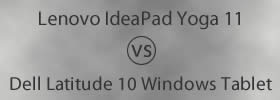Difference between Virus and Malware
Key Difference: Viruses are programs or codes that attach themselves to files and programs and run inside the computer without the knowledge of the user. Malware, short for malicious software, is an umbrella term that incorporates all kinds of software or programs that can be used to disrupt normal computing capabilities.
 The moment a computer starts acting weird and crashes or stops running certain applications, automatically people assume that it is a virus, worm or a certain type of malware. Viruses and malware are dangerous software that work to affect the computer’s software as well as collect sensitive data. Initially, viruses and malware were created as a joke or a prank; however, when people realized that they could use these software to attain private data from a computer as well as spam the computer and hinder its performance, they started using these software for illegal activities. Many people often confuse these two terms as they seem similar in nature. However, malware is practically an umbrella term that includes all kinds of malicious programs and codes.
The moment a computer starts acting weird and crashes or stops running certain applications, automatically people assume that it is a virus, worm or a certain type of malware. Viruses and malware are dangerous software that work to affect the computer’s software as well as collect sensitive data. Initially, viruses and malware were created as a joke or a prank; however, when people realized that they could use these software to attain private data from a computer as well as spam the computer and hinder its performance, they started using these software for illegal activities. Many people often confuse these two terms as they seem similar in nature. However, malware is practically an umbrella term that includes all kinds of malicious programs and codes.
Viruses are programs or codes that attach themselves to files and programs and run inside the computer without the knowledge of the user. The term ‘virus’ has become an umbrella term for all types of malware, which have the ability to replicate itself and does not include adware and spyware. Viruses have been termed as virus because of their characters that are similar to actual viruses. They can attach to a certain hosts, files and programs and then replicate themselves to completely infect the computer. They can also travel via transference of data and files to infect other systems. All computer viruses are man-made. Almost all viruses are attached to an executable files, which requires the user to run the file in order for the virus to infect the system.
There are two types of viruses: Nonresident and Resident. Nonresident viruses, upon execution, immediately start searching for other hosts that can be infected, infect those targets, and finally transfer control to the application program they infected. Resident viruses do not immediately search for hosts and instead loads itself into memory on execution and transfers control to the host program. The main purpose of a virus to infect, alter and damage files. These can also change the name and location of the files and corrupt them to the point that they become unreadable. Computers can be protected by using antivirus and spyware software. In order to remove the virus, infected files can be deleted or the computer can be formatted or restored.
Malware, short for malicious software, is an umbrella term that incorporates all kinds of software or programs that can be used to disrupt normal computing capabilities. These software or programs can be used by attackers disrupt computing operation, gather sensitive information or access private secure systems. Almost all kinds of disruptive programs including spam mail are included under malware. Malware includes computer viruses, ransomware, worms, trojan horses, rootkits, keyloggers, dialers, spyware, adware, malicious BHOs, rogue security software, etc.

Malware comes in forms of code, scripts, mail, software and even legitimate programs. Malware is commonly used as a means to gather statistics, sensitive data (name, address, credit card information, etc.), send mass spam e-mails, host contraband data, send advertisement, etc. The most common used malware includes viruses and worms. Malware exploits security defects in software, operating system and applications. The most common way to keep the system from malware includes anti-malware and anti-virus software. If a system is already infected, then system restore and formatting can be used to fix the computer. There are also professionals that work to clean the computer of the malware for a cost.
In short, malware is the generic term for any type of malicious software that exists, including virus. Virus is a type of malware that infects executable systems and causes them to stop working or crash.
|
|
Virus |
Malware |
|
Definition |
A virus is a program code that attaches itself to a program or file and infects other computers through that file. |
Malware is short for malicious software. These are programs used to disrupt computer operations, gather sensitive data or gain access to private systems. |
|
Controlled remotely |
No |
Depends on the type of Malware. |
|
Types |
Resident viruses and non-resident viruses. |
Computer viruses, Ransomware, Worms, Trojan horses, Rootkits, Keyloggers, Dialers, Spyware, Adware, Malicious BHOs, Rogue security software |
|
Process of infection |
Attaches itself to an executable file, folder or program. |
Can spread automatically or requires user intervention, depending on the type of malware. |
|
Process of spreading |
Viruses rely on transfer of files or other programs in order to spread to other systems. |
Spread using executable software of through transference of files and folders. |
|
Infecting files |
Yes, it modifies, alters or deletes certain files. |
Can modify, alter or delete data. Can collect information and pass on other locations. |
|
Speed of spreading |
Slower compared to worms. |
Speed depends on the type of malware. Viruses are slow in spreading, while worms are fast. |
|
Type |
Malware |
Malware |
|
Replication |
Yes |
Yes |
|
Protection |
Antivirus software |
Antimalware software |
|
Removal |
Antivirus, formatting, system restore. |
Antimalware, formatting, system restore. |
Image Courtesy: stlcompdocs.com, outsourcemanila.com









Add new comment